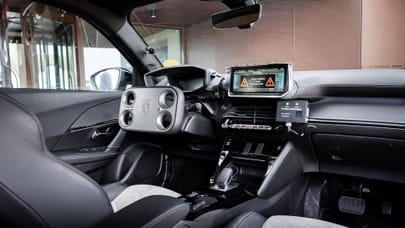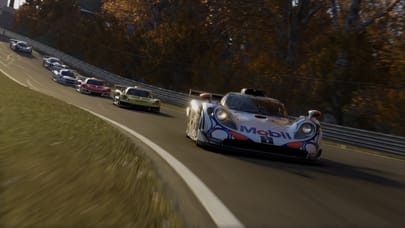
Remembering classic games: F1 Manager (1999)
A flawed but fun dose of millennial motorsports management
The 1999 F1 season was one of what ifs. Hakkinen edged a tense championship in which Schumacher broke his leg at Silverstone and bowed out of contention. It was a year where both Eddie Irvine and Heinz-Harald Frentzen were legitimate contenders with wavering luck. A bit of fortune here and there for any of the top four drivers, and it might all have been so different.
The what ifs only intensify in Intelligent Games and EA Sports’ management game that carried the 1999 F1 season’s license. Here was an opportunity to take control of Prost GP and see the team fulfill the potential it teased for about five minutes in 1997 until Panis suffered that horrific injury, breaking both his legs. It was a chance to wrestle Jordan back to winning ways, if you liked, or to nudge McLaren back onto the top step with more regularity. Or, fine, just take control of Ferrari and watch Schumi gap everyone by 20 seconds before you’ve even hit your first pit window.
Frontier’s modern day F1 Manager series is like sitting down in a space shuttle cockpit by comparison. It’s granular about management, finding fascination in the exact nature of tyre degradation and specific contract clauses. EA’s F1 Manager… isn’t that. Much like the cars of the era, it’s a brutish, unpredictable beast with little care for the minutiae.
That said, it was granular enough for you to really break the real-life canon. In this completely apolitical version of Formula One, the only thing stopping you as team boss of Ferrari from whacking a Mercedes engine in the back of your cars was budget. It was the same all the way down the grid - the aforementioned Mr Prost was ultimately hamstrung by Honda and Peugeot’s politicking in reality, but here you’re free to buy a formidable engine, brakes and electronics package if you can balance the books.
“McLaren in bullish mood,” you’d inevitably read in your email inbox as the teams revealed their 2000 packages and your first pangs of worry set in that this Minardi Mecachrome outfit with discount brakes may not be a world-beater. Then on the streets of Albert Park, you’d find swift confirmation of that worry.
F1 Manager’s great innovation was the ability to micromanage drivers mid-session. You could tell them to either drive conservatively, to push, or to go all-out. ‘All-out’ in this context being a synonym for ‘please deposit my expensive car in the nearest available gravel trap’.
It was a good system too, one that really let the more talented drivers’ virtues shine. It was all very well and good asking Luciano Burti to push like mad all race to try to counteract the five seconds per lap he’d lose via engine speed, but if his stats simply weren’t up to the task - and they weren’t - he’d eventually make a mistake and either go off track, or retire the car altogether. The cream of the crop, however - your Coulthards, your Barrichellos, and a very highly regarded Heinz-Harald Frentzen - would be able to drive faster for longer, with a smaller chance of errors.
The chance to decide pit strategy seemed like another avenue for upsets and headline-grabbing results. And in the right circumstances, usually changeable weather conditions, you could indeed puff your chest out and enjoy the sight of a couple of Benettons on the podium. More often than not you were inclined to try some wild strategy that even modern-day Ferrari would think twice about in a bid to make up positions, and were duly chastised for such reckless abandon via punishing tyre wear.
The very best thing about F1 Manager now, though, is how it captures a moment in time so comprehensively. You play 10 seasons in this game with full knowledge of what was to come in real life. This was the precipice of the Schumacher dominance era, the moment he began those five consecutive WDCs. It was the moment McLaren ceded territory to Ferrari and Hakkinen’s metronomic success abruptly ended. Williams would become transformed by those BMW engines and a hot-headed, chrome-helmeted hotshot named Montoya. Young Kimi Raikkonen would nearly end the Ferrari dominance, and then didn’t. Alonso would arrive, quietly overperform in the Minardi, and eventually topple the king in a Renault.
But here, it’s all to play for. If you’re absolutely determined, you can feasibly make Gaston Mazzacane a world champion. You can rewrite the history books such that Schumacher doesn’t get a look in, and the Williams is the car to be in. And that’s still a thrill now - maybe even more so now that the nostalgia factor’s at dangerously high levels.
Top Gear
Newsletter
Thank you for subscribing to our newsletter. Look out for your regular round-up of news, reviews and offers in your inbox.
Get all the latest news, reviews and exclusives, direct to your inbox.
Trending this week
- Car Review
BMW iX3








